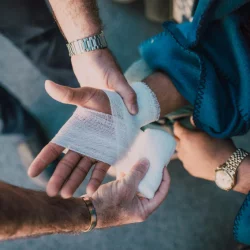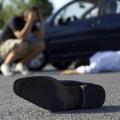Car Seats: Study Says Children are At-Risk
The term “ignorance is bliss” is applicable in some instances of our everyday lives, but it certainly is not applicable when it comes to car seats and child safety. Parents in the United States, however, have apparently been mixing ignorance with children’s car seats as a new study shows that many parents are either ignoring or unaware of the child safety guidelines for car seats in motor vehicles.
Car Seats Vital to Child Safety
According to the Centers for Disease Control and Prevention (CDC), motor vehicle accidents are the leading cause of death in children over three years of age in the United States. The CDC says these crashes also cause 179,000 total child injuries annually.
Statistically speaking, ignorance and lack of knowledge when it comes to car seats for children can be a deadly combination. The CDC also says that child safety seats reduce the risk of death for infants by 71 percent when they are properly utilized. For toddlers – children between the ages of one and four – the risk is reduced by 54 percent.
“Car seats are one of the most important safeguards for children in the event of a motor vehicle accident,” says car accident attorney Chris Davis of the Davis Law Group in Seattle. “Installing and utilizing them incorrectly completely defeats the purpose they are meant to serve.”
But according to a study recently published in the August 8 issue of the American Journal of Preventive Medicine shows that many parents are putting their kids at serious risk of injury and death by not properly installing and using car seats.
Study Shows Trends of Misuse
The researchers, who reviewed three years worth of data involving approximately 21,500 total children, found that most children are not safely secured in their car seats or booster seats. To generalize the results, the child’s overall level of safety decreased significantly as age increased. Children were also more likely to sit in the front seat unrestrained, despite the warnings issued recently from the American Academy of Pediatrics (AAP).
According to the AAP, infants and toddlers under the age of two should always use a rear-facing car seat until they exceed that age or exceed the seat’s height or weight recommendations. Children who are too big for a rear-facing seat should use a belt-positioning booster seat until a normal seat belt fits properly – typically between the ages of 8 and 12.
Furthermore, the AAP says that when a seat belt begins to fit more appropriately, children should use seatbelts in the back seat of the car until they reach the age of 13. Then, the organization says, it is more appropriate for children to be in the front seat of a vehicle.
“The most important finding from this study is that, while age and racial disparities exist, overall few children are using the restraints recommended for their age group, and many children over five are sitting in the front seat,” says Dr. Michelle Macy, one of the study’s authors. “Our findings demonstrate that not all children have been reached equally by community-based public education campaigns and the passage of child safety seat laws in 48 states. Further development and dissemination of culturally specific programs that have demonstrated success in promoting restraint use among minority children are necessary.”
Interestingly enough, the study also found that an adult driver who did not wear a seat belt was 23 times more likely to have a child who was unrestrained in a car seat, indicating that parents’ own car safety habits can be correlated to car seats and the safety of their own children.
Washington State Child Injury Attorneys
If your child has been injured in a car accident, you may be entitled to financial compensation for injuries and medical bills. It can sometimes be beneficial to consult with an experienced personal injury lawyer before settling your claim on your own to determine if legal representation is in your best interests. Most attorneys offer free consultations, so there is usually no obligation to speaking with a lawyer.
More to Read:
Previous Posts:




